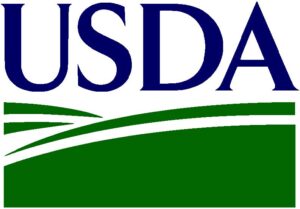By Suzy Hodgson
“I was surprised that I could raise animals especially pigs and not feel terrified. I’d grown up outside of Detroit so this experience was way outside my comfort zone,” says Kate Osgood, co-owner of Birch Rise Farm in New Hampshire. With her husband Ken’s experience growing up with pigs and the help of her in-laws who are local real estate agents, the Osgoods were able to find and purchase their family home and jump into farming in 2016.
At the end of the summer 2019, Kate and Ken had 175 meat birds going for processing. Over the year, Kate sells about 900 meat birds which are processed off the farm. She also has 250 egg layers, two Katahadin meat sheep, six Berkshire sows to breed, one boar, and four meat pigs which roam comfortably in the farm’s pasture and woodland paddocks. Birch Rise Farm is one of the few registered breeders of Berkshire pigs in New Hampshire.
This fall 2019, Kate is getting five Navajo-Churro ewes and two rams which she’ll start breeding. Altogether Birch Rise Farm has eight pasture areas of about 1.5 acre each on the 15-acre farm. With two children under 10, some of Kate’s time is spent keeping her 3 -year old out of harm’s way, but her 9-year old has risen to the challenge of farming by participating in 4-H and helping with farm tasks.
Originally from Michigan, Kate got her MA in organizational behavior and marketing, which has proved useful in being able to network and develop her skills as a farmer. The University of New Hampshire (UNH) Extension classes she undertook as part of the “Women in Livestock” program added to her skills. Kate met Kelly McAdam, UNH Extension Agricultural Business Management Field Specialist, when Kelly came by the farm to buy a turkey in 2018.
As Kate describes, “When I met Kelly, I immediately said, ‘I need your help. I’m great at keeping kids and animals alive, but not very good with plants.’ After the first two years of raising 40 pigs, we noticed the growing season was very sparse and the pastures were worn down. A lot of manure was going in, but not a lot was coming out. The paddocks needed a rest and needed reseeding which I should have done last fall but I didn’t know how to until I took Kelly’s “Women in Livestock” class in the winter.”
Learning about rotational grazing is hugely important for farmers who are raising their animals on pastures, especially how to divide up the pastures, how to care for trees within the pasture (i.e, silvoculture), and when to move the livestock. Kate has also learned about the differences in feed rations between piglet, meat, and breeding types. As she explains, “With the grain we started out using, we found our pigs were getting too fat and we were having issues with farrowing. Peaches got so big she was like a hippo and her cervix didn’t open enough.”
Besides the dire consequences of using the wrong feed, financial risk typically looms large on small farms. As Kate describes, “There’s always something that breaks down and there’s always some animal needing food. Cash flow can be a problem. We sell Thanksgiving turkeys once a year, but they take six to eight months to grow. We had pigs for two years, but then the paddocks needed a rest and we were forgoing income of $1000-1200 for each pig. Now, we’ve reseeded the paddocks and left time for vegetation to become established.”
Farm records keeping the farm on track
Kate keeps breeding records of when the pigs have mated with an app called Gesdate. The app has a breeding cycle schedule and in-built calculator to predict farrowing dates based on breeding dates. As Kate explains, “With a tentative date for the sows, I can confirm by testing and seeing if Peaches is in heat. For all the meat sales, I use Google docs and make spreadsheets for keeping track of sales, inventories, orders, and deposits. For our pigs which we sell ½ or whole, we keep track of deposits, customers’ cut sheets, butcher time, balances per customer and pick-up dates. I duplicate the sales sheet formats for the following year for each meat type we sell.” These business records help Kate plan for selling her animals for the next year.
“While I’ve been happy with our sales, looking back, I don’t think we should have grown as fast and had hands in all the honey pots. Maybe, we could have focused on one thing.” For example, Kate toured seven facilities before she found the USDA-approved meat processor, Sandford Butcher Shop, in Maine which met her criteria. Sandford has an in-house smoker which is important to minimize the risk of contamination that can occur if the meat goes off site to be smoked.
Based on this experience, Kate’s advice to other women new to farming is:
- Start slowly by doing research and connecting with Extension organizations in your state.
- Get comfortable with one thing and then move to the next thing.
- Pay attention to your pastures to balance livestock numbers with forage regrowth.
- Don’t listen to the old curmudgeons at the tractor supply stores or the old-timers at the butcher shops. Don’t let “typical” gender roles get you down.










